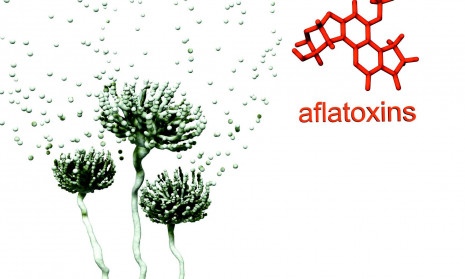GM Maize and mycotoxins

In the first Issue we commenced an analysis of problems related to the structure of African agriculture, that discussion is continued here. We present evidence of the replacement of a tropical forest by oil palm plantations, as an economic necessity. These forests are not only repositories of vast numbers of extremely valuable species, but are also vital carbon sinks. Moreover, the act of uprooting large numbers of tropical trees, itself leads to the release of enormous quantities of greenhouse gases. The resolution of the adverse effects of this type of development will involve the solution to several interrelated issues.
The paper by Gustafson, Borlaug, and Raven in this Issue indicates that it should be possible to meet the increasing world-wide demand for food over the next decades, without increasing the area under cultivation, if reliable technical developments are adopted. In this Issue the debate is opened between so called conventional agriculture and organic agriculture, a debate that has a considerable bearing on the conclusions of Gustafson et al.
Using the scientific method, in its simplest form, progress is made by a comparison of a novel method with an existing method. Unfortunately direct scientific comparisons between conventional and organic methods are scarce, so that conclusions about the relative merits of these systems cannot be drawn from developments within each field, particularly in respect of worldwide agricultural production. Statistically, the main effects are not comparable, but it is possible to make some comparison between interactions within each field.
As developments in agriculture should be from sound scientifically based evidence, it is the case that there will be a convergence between the methods of organic and conventional production, so that under many agronomic conditions the methods will become indistinguishable. Basing this debate on such evidence must be to the benefit of all concerned. A much greater understanding of how plants “work” to produce a crop will simplify and clarify many of the arguments.
Organic production excludes GM technology. A paper in this Issue describing GM technology adopted in sugar beet production indicates great advantages in weed control with a reduced use of herbicides. Another example shows that premature adverse criticism of GM methods should be avoided. Bacillus thuringiensis (Bt) is a bacterium, which produces crystal proteins toxic to a range of insect pests, including the corn borer caterpillar. Bt preparations rich in this protein have been used for many years as insecticides. A transgenic (GM) maize resistant to the corn borer was created by inserting a single gene for a Bt protein into the maize genome. The resulting crop expresses a very high level of the toxin preventing corn borer damage, avoiding the need for sprays that could affect a range of insect species.
These advantages, in themselves, might be considered by some individuals to provide an inadequate case for the adoption of GM maize. This clearly indicates that we should neither accept, nor reject, any technology without evaluating its potential for utilization under individual environmental conditions.
A secondary benefit is that Bt maize grain has lower concentrations of fungal mycotoxins than non-Bt maize grain (The Royal Society 2009).
These toxins include fumonisins, produced by Fusarium moniliforme, an aggressive coloniser of maize, so that fumonisins have a worldwide distribution. Samples have shown a presence frequently exceeding 50 % of crop samples with visually healthy kernels (Pitt & Hocking 1996, Bryden et al. 1998, Wu 2007).
These toxins can cause severe damage to human and animal health and in my experience at high concentrations in maize grain have been lethal.
Fortunately, concentrations in grain infrequently reach such levels and mixed diets reduce their dietary concentration.
Climate change could, nevertheless, alter the distribution of damaging concentrations that could radically change the risk:benefit argument relating to the introduction of Bt maize, affecting the presence of fumonisins, aflatoxins and other seed borne mycotoxins!
Appointments to the Editorial Board
This is an International journal and the Editorial Board is very pleased to introduce to our readers three scientists as new members:
Professor J. Perry Gustafson, Missouri, Professor Glen M. MacDonald, California and Professor Neil C. Turner, Western Australia.
I also wish to thank my old friend, Maxwell D. Epstein, Dean Emeritus, International Students and Scholars, UCLA, for introducing Professor MacDonald to us.
Max and I worked on international relations during our days in Ames, Iowa, several decades ago.
References
I Anon (2009) Developments in bio- logical science with potential benefits for food crop production. In: Reaping the benefits. Science and the sustain- able intensification of global agricul- ture, RS Policy document 11/09, ISBN:978-0-85403-784-1, Publ.The Royal Society, 2009, pp. 21-38.
I Bryden, W.L., Shanks, G.J., Ravindran, G., Summerell, B.A. & Burgess, L.W. (1998) Mycotoxin con- tamination of Australian pastures and feedstuffs; and Occurrence of Fusarium moniliforme and fumonisins in Australian maize in relation to ani- mal disease. In: Toxic Plants and Other Natural Toxicants (eds T. Garland & A.C. Barr), pp. 464–8 and 474–8. CABI, Wallingford, U.K.
I Pitt, J.I. & Hocking, A.D. (1996) Current knowledge of fungi and mycotoxins associated with food com- modities in Southeast Asia. In: Mycotoxin Contamination in Grains. 17th ASEAN Technical Seminar on Grain Postharvest Technology, Lumut, Malaysia, 25–27 July 1995 (eds E. Highley & G.I. Johnson) ACIAR Technical Reports Series; No 37; pp. 5–10. Publ. Australian Centre for International Agricultural Research, Canberra.
I Wu, F. (2007) Bt corn and impact on mycotoxins. CAB Reviews: Perspectives in Agriculture. Veterinary Science, Nutrition and Natural Resources, 2, 060.
Download pdf
